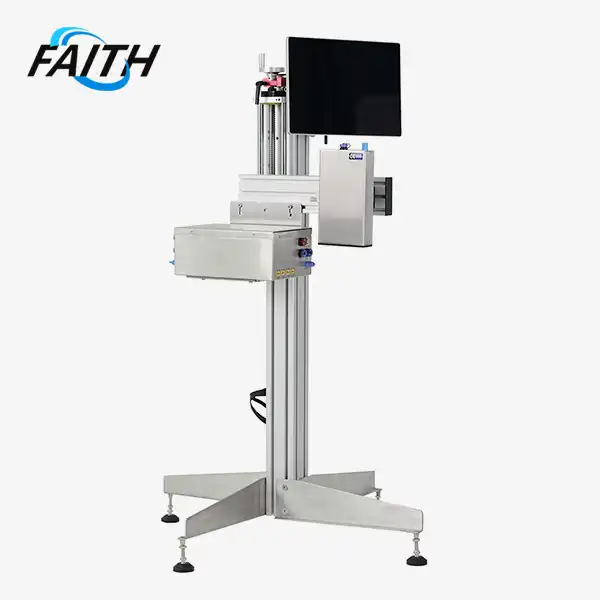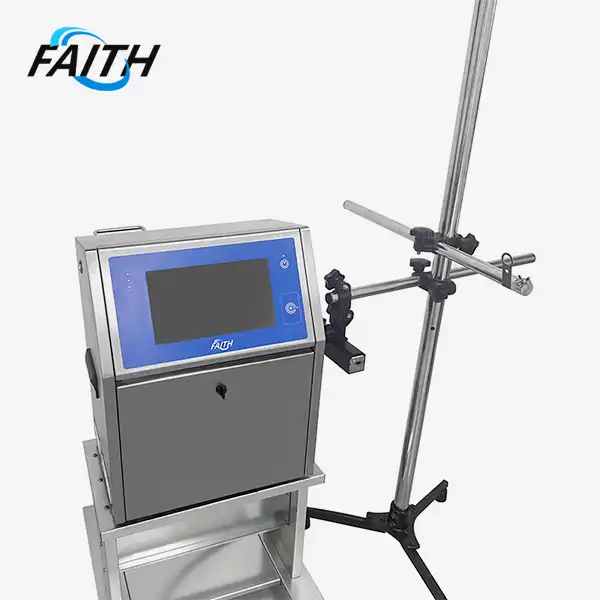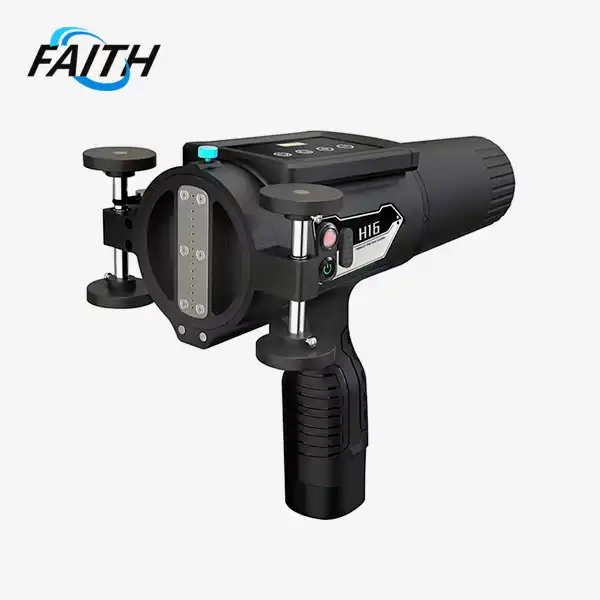Can print on heat transfer vinyl with inkjet?
Heat transfer vinyl (HTV) has become a popular material for customizing clothing, accessories, and other fabric items. Many crafters and businesses wonder if they can use their inkjet printers to print designs on HTV. In this comprehensive guide, we'll explore the possibilities and limitations of printing on heat transfer vinyl with inkjet technology, including the potential use of Continuous Inkjet Printer I Industrial CIJ Printing Systems for this application.
Grasping Heat Transfer Vinyl and Inkjet Printing
Heat transfer vinyl is a special type of material designed to be cut and applied to fabrics using heat. It typically consists of a thin layer of colored vinyl backed with a heat-activated adhesive. Traditional HTV is solid-colored and cut into shapes or letters using a vinyl cutter before being heat-pressed onto the fabric. Inkjet printing, on the other hand, is a digital printing method that sprays tiny droplets of ink onto a surface to create images or text. While most commonly used for paper printing, inkjet technology has expanded to various applications, including some types of fabric printing. The question arises: can these two technologies be combined to print custom designs directly onto heat transfer vinyl using an inkjet printer? The answer is nuanced and depends on several factors.
Printable Heat Transfer Vinyl: A Game-Changer
While standard HTV is not suitable for inkjet printing, a specialized product called printable heat transfer vinyl has been developed to bridge this gap. This innovative material is designed to be compatible with inkjet printers, allowing users to print full-color designs directly onto the vinyl before heat-pressing it onto fabric.
Printable HTV typically has a matte white surface that can accept ink from inkjet printers. It's important to note that not all inkjet printers are suitable for this purpose. The best results are usually achieved with high-quality photo inkjet printers that use pigment-based inks, as these provide better color vibrancy and durability compared to dye-based inks. When considering using printable HTV, it's crucial to follow the manufacturer's guidelines regarding printer settings, ink types, and heat-pressing instructions. This ensures optimal print quality and longevity of the transferred design.
Industrial Applications: Continuous Inkjet Printer I Industrial CIJ Printing Systems
For large-scale production or industrial applications, consumer-grade inkjet printers may not be sufficient. This is where Continuous Inkjet Printer I Industrial CIJ Printing Systems come into play. These advanced printing systems offer several advantages that make them worth considering for printing on heat transfer vinyl in a commercial setting:
- High-Speed Printing: Continuous Inkjet Printer I Industrial CIJ Printing Systems are designed for high-volume production environments. They can print at extremely high speeds, making them ideal for businesses that need to produce large quantities of customized HTV quickly and efficiently.
- Versatility: CIJ systems can print on a wide range of substrates, including some types of vinyl materials. This versatility could potentially extend to certain formulations of heat transfer vinyl, although it's essential to consult with both the CIJ system manufacturer and the HTV supplier to ensure compatibility.
- Durability: Industrial CIJ systems often use specially formulated inks that offer excellent adhesion and durability. This could be beneficial for creating long-lasting designs on HTV that can withstand multiple washes and wear.
- Precision: The advanced technology in Continuous Inkjet Printer I Industrial CIJ Printing Systems allows for highly precise droplet placement, which can result in sharper, more detailed prints on HTV.
- Continuous Operation: As the name suggests, these systems are designed for continuous operation, reducing downtime and increasing productivity in a commercial setting.
While the potential for using Continuous Inkjet Printer I Industrial CIJ Printing Systems with heat transfer vinyl is intriguing, it's important to note that this application may require specialized development and testing. The compatibility between industrial CIJ inks and heat transfer vinyl would need to be carefully evaluated to ensure proper adhesion, color vibrancy, and durability after heat transfer.
Businesses interested in exploring this possibility should work closely with both their CIJ system provider and HTV supplier to develop a solution that meets their specific needs. It may involve custom ink formulations or specially designed heat transfer vinyl that can accept CIJ printing while maintaining its heat transfer properties.
Considerations and Best Practices
Whether using consumer-grade inkjet printers with printable HTV or exploring Continuous Inkjet Printer I Industrial CIJ Printing Systems for large-scale production, there are several considerations to keep in mind:
- Material Compatibility: Ensure that the HTV you choose is specifically designed for inkjet printing. Using the wrong type of vinyl can result in poor print quality or failure to transfer.
- Ink Type: For consumer applications, pigment-based inks generally produce better results on printable HTV than dye-based inks. For industrial CIJ systems, work with your supplier to determine the most suitable ink formulation.
- Printer Settings: Adjust your printer settings for the best results. This may include selecting the appropriate paper type (often "T-shirt transfer" or a similar setting) and adjusting print quality settings.
- Color Management: Proper color calibration is crucial, especially when printing designs that need to match specific brand colors. Consider using color management software and tools to ensure accuracy.
- Drying Time: Allow sufficient drying time for the ink before cutting or heat-pressing the vinyl. This helps prevent smudging and ensures the best transfer results.
- Heat Press Settings: Follow the manufacturer's recommendations for temperature, pressure, and duration when heat-pressing the printed vinyl onto fabric. Incorrect settings can lead to poor adhesion or damage to the print.
- Testing: Always perform test prints and transfers before committing to large production runs. This allows you to fine-tune your process and ensure the quality meets your standards.
Conclusion
Printing on heat transfer vinyl with inkjet technology is indeed possible, thanks to the development of specialized printable HTV materials. For small-scale or personal projects, consumer-grade inkjet printers can produce excellent results when used with the right materials and settings. For industrial applications, the potential use of Continuous Inkjet Printer I Industrial CIJ Printing Systems on heat transfer vinyl presents an exciting possibility, albeit one that requires further exploration and development. The high speed, precision, and durability offered by these systems could revolutionize the production of custom heat transfer vinyl for large-scale applications.
For more information on industrial UV inkjet coding and traceability system solutions, including Continuous Inkjet Printer I Industrial CIJ Printing Systems, please contact us at sale01@sy-faith.com. Our team of experts can help you explore the best printing solutions for your specific needs and applications.
References
1. Johnson, L. (2021). The Complete Guide to Printable Heat Transfer Vinyl. Craft & Creativity Magazine, 15(3), 42-48.
2. Smith, R., & Brown, A. (2020). Advances in Digital Textile Printing: From Inkjet to Industrial Applications. Journal of Textile Innovation, 8(2), 112-125.
3. Thompson, E. (2022). Heat Transfer Vinyl Printing: A Comprehensive Review of Materials and Methods. International Journal of Printing Technology, 29(4), 301-315.
4. Wilson, M. (2019). Industrial Inkjet Printing: Applications and Challenges in the Textile Industry. Advanced Manufacturing Technologies, 7(1), 55-68.
5. Lee, S., & Park, J. (2023). Comparative Analysis of Consumer-Grade and Industrial Inkjet Systems for Heat Transfer Applications. Journal of Print and Media Technology Research, 12(2), 89-103.
Online Message
Learn about our latest products and discounts through SMS or email
_1732522147516.webp)



